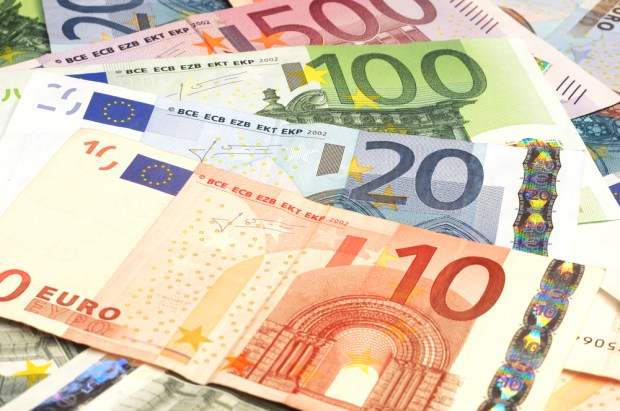Cash: Ageless And Thriving In Eastern Europe

Call it an oldie but goodie. The latest research from the hot-off-the-presses PYMNTS.com Q3 2016 Global Cash Index™ is in, and it proves that cash use is alive and well in Eastern Europe, with $1.3 trillion being spent by Eastern European consumers in 2015. For other key takeaways, along with insights from the Bank of Lithuania’s head of the market infrastructure policy division, Tomas Karpavicius, check out the latest index.
The results are in, and the research shows that, while cash may be ancient, it is still massively popular among shoppers in Eastern Europe.
According to the just-released Q3 2016 PYMNTS Global Cash Index™, Eastern European consumers spent more than $1 trillion in cash in 2015. What’s more, the region has a higher cash share than its Western European neighbors and even spends more physical currency per capita than the United States.
Other key takeaways from the Q3 2016 Index include:
- Despite the advancement of new payment methods, like cards and mobile wallets, the amount of cash spent each year in Europe is expected to grow from $1.3 trillion in 2015 to $1.6 trillion in 2020, a $300 billion increase.
- Lithuania and Croatia have the largest cash shares, with 86.5 percent and 71.3 percent, respectively.
- Cash is least popular in Estonia (19.2 percent cash share) and Turkey (25.9 percent cash share).
The index also includes a conversation with Tomas Karpavičius, head of the market infrastructure policy division of the Bank of Lithuania. PYMNTS caught up with Karpavičius to discuss cash usage in Lithuania.
Here’s a preview:
“Older people are much less likely to change their habits, while younger people are more open to new payment methods,” Karpavičius said. “They are used to spending cash — they’re familiar with it and view it as a currency that is free of charge to use, as opposed to payment cards and other payment services.”
Regardless of the spender’s age, cash is often favored because consumers feel it is a more reliable form of currency, Karpavičius explained. In Eastern Europe, where political unrest and economic insecurity are woven into the recent history of the region, spending cash is seen as more secure than using credit to make purchases or investing.
“The level of income also influences the usage of cash,” Karpavičius said. “People who have low income … tend to use cash more than cards because they worry about their spending or being charged a fee.”
About The Index
The PYMNTS.com Global Cash Index™, a Cardtronics collaboration, focuses on the use of cash for making payments and as a payment method that equally plays a role with cards, checks, direct debit and other methods of settling up between consumers and businesses. Unlike most reported estimates of cash, our proprietary data analysis focuses on the use of cash for making payments rather than hoarding.
To download the 2016 Q3 PYMNTS Global Cash Index™, fill out the form below below.
